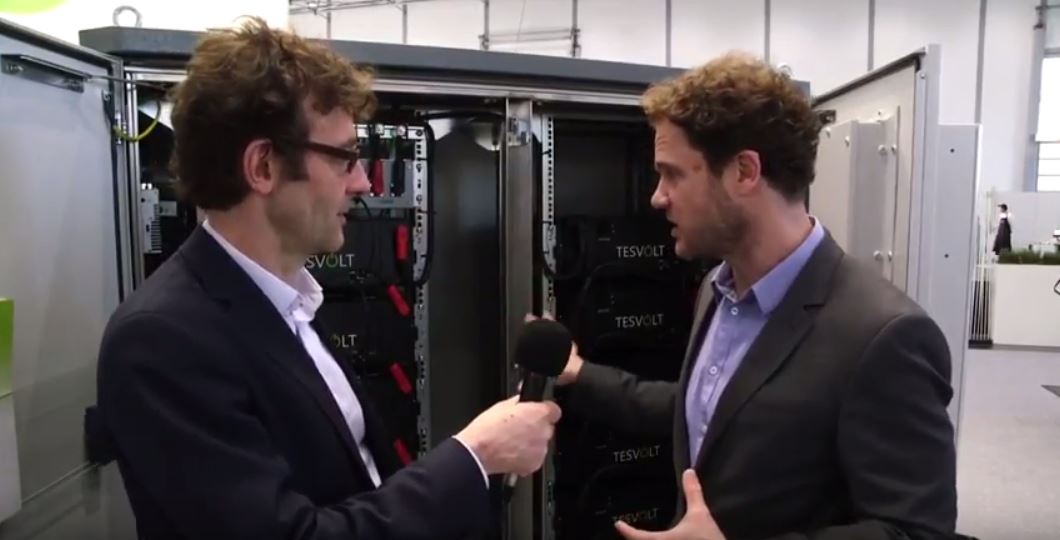After three busy days at the Energy Storage Europe exhibition and conference in Düsseldorf, Germany, pv magazine’s editorial director, Michael Fuhs and editor-at-large, Jonathan Gifford gathered their thoughts and impressions of the show and pieced them together for this 12-minute video.
The tour takes in a selection of the chief highlights from Energy Storage Europe, including edge-of-grid batteries, the rise of redox flow, the efficacy of electrolyzers and the future of cell production in Europe.
The pv magazine team also visited Tesvolt to discuss the German company’s new outdoor battery storage system, which has been designed to meet the needs of space-constrained C&I players.
ADS-TEC, meanwhile, showcased its rapid charging system, which is capable of intelligently altering its charging and discharging voltage, depending on grid capacity at the time. Fellow German firm, Schmid also showcased this capability, albeit using redox flow batteries.
The recurring question facing redox flow technology at Energy Storage Europe was simply: at what time-duration does redox flow become viable? Michael Fuhs says that consulting firm Apricum has calculated that, even from three hours, redox flow begins to look compelling when compared to lithium-ion.
Among the 170 exhibitors at Energy Storage Europe, there was a good cross-section of the storage ecoysytem, from batteries right through to power-to-X solutions, such as methanization: an approach taken by Electrochaea, which has developed a scalable methanation plant to offer frequency regulation.
“Some companies can profitably build electrolyzers next to solar power plants, particularly in the U.S.,” said Fuhs of this technology, which may still be some years away from really having a disruptive impact on the energy system.
The focus of the event was flexible sector coupling, and the pv magazine editors found a great deal of diversity and promise in this space, bringing energy, transportation and other parts of the economy together with storage.
One firm that showcased a particularly compelling system was Alpiq AG, which offers an e-mobility charging solution that identifies when grid electricity is at its cheapest before charging the vehicle.
Another technology offered by the firm is its grid balancing service, which will seek to charge the vehicle depending on the voltage of the grid. “This can really reduce voltage peaks and help to stabilize the grid,” Fuhs explained.
The tour wraps up with a look at Younicos’ large-scale battery storage and gas turbine hybrid system, as well as its new rental model for the storage-as-a-service space, with our editors ending on a discussion over cell production capacity and goals in Europe.
This content is protected by copyright and may not be reused. If you want to cooperate with us and would like to reuse some of our content, please contact: editors@pv-magazine.com.



Nice video but you should have called it Energy Storage Germany technology tour